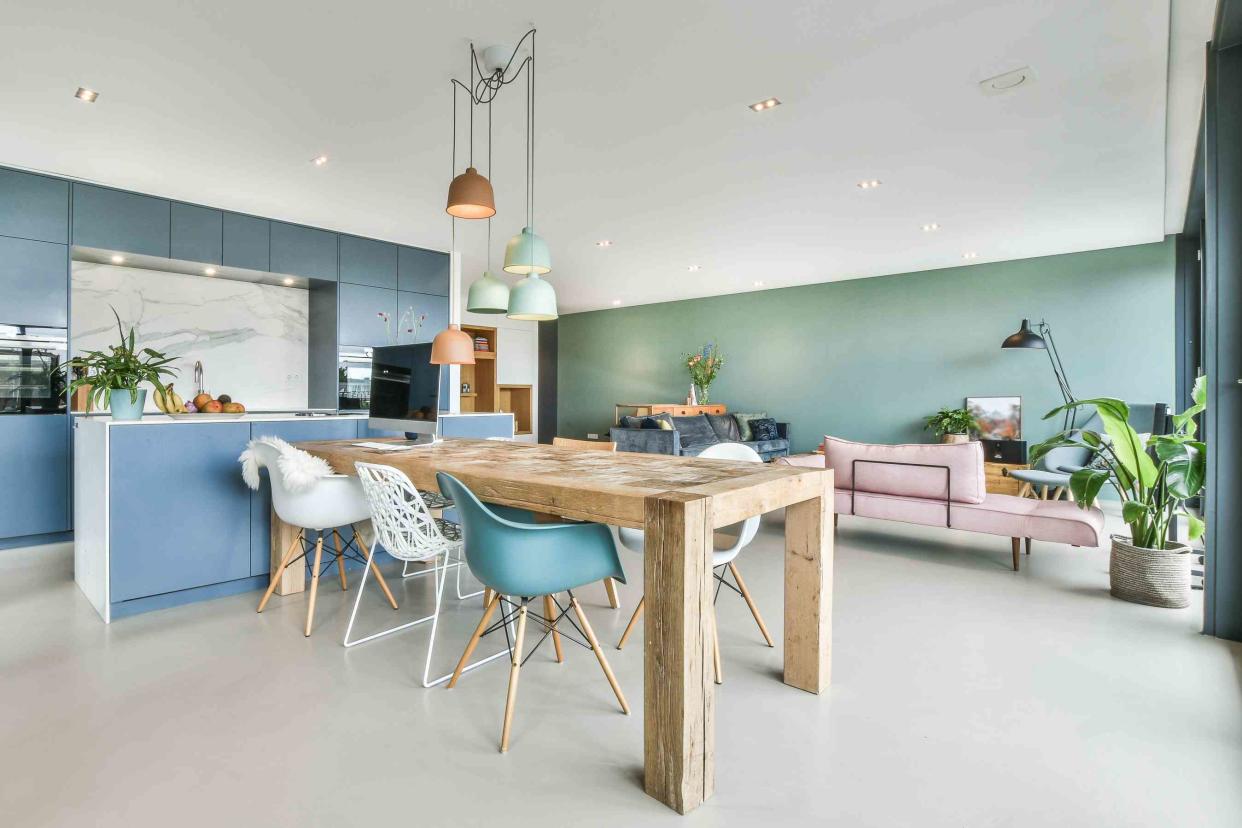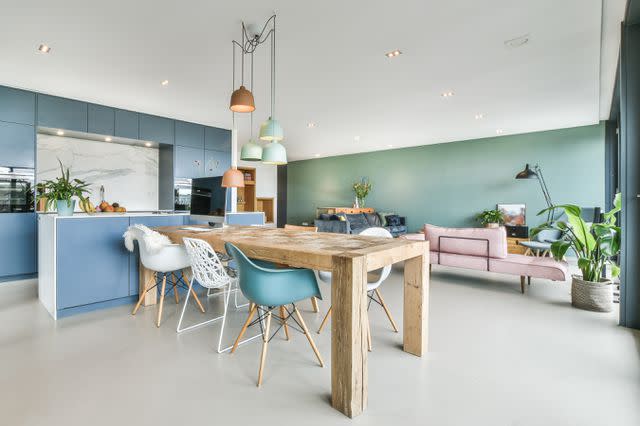4 Types of Lighting and How to Use Them in Your Home

Perfect the lighting design in your home with these expert tips.
Creating beautiful, functional, and comfortable spaces in your home includes a variety of elements. While furniture and decor may be front of mind when designing your space, there's another element that can be just as important as finding the perfect couch or picking out the right rug—and that's the lighting.
“Lighting plays such a critical role in a home's decor, and when done correctly, it adds warmth, sets the mood, and determines the functionality of each space,” explains Kristina Phillips of namesake interior design firm in Ridgewood, New Jersey.

Woning Media/Getty Images
Natural lighting is the ideal backdrop when you want to create a sense of openness. However, it can be limited in some homes—and it’s not available 24 hours a day. That’s where artificial lighting design comes in. “Artificial lighting can be used to highlight architectural features, create focal points, and establish different zones within a room,” Phillips explains. And when you layer a space with different types of lighting, she says it can create a cohesive and balanced aesthetic.
Below, learn about the different types of lighting, along with expert tips for using them to the best effect.
Related: 10 Design Ideas to Make Your Home Warm and Cozy, According to Pros
Ambient lighting
You’re probably most familiar with ambient lighting. Most of the time when you walk into a room, and flip a light switch, that's what you're turning on. “Ambient lighting is the main lighting in a room and usually comes from above, which we call ceiling lighting,” says Riccardo Longo, lighting product developer at Audo Copenhagen, noting that it's used to set the mood in a space.
Ambient lighting is also known as base lighting, and it’s used to provide overall lighting for everyday activities. “Recessed lights, chandeliers, and flush-mount fixtures help to evenly illuminate your space,” says Nadia Watts of Nadia Watts Interior Design in Denver, CO.
“Ambient lighting helps to create a welcoming environment and is a great starting point for your lighting scheme.” She recommends putting all of your ambient lighting on dimmers since this allows you to control the overall amount of illumination at any time, based on your interior and exterior needs.
Task Lighting
Task lighting isn’t as general, and doesn’t cover such a broad area as ambient lighting. “Task lighting is important because it’s used to highlight a specific area," Longo says. "For example, you might add task lighting next to the chair where you like to sit and read a book, or at your desk where you like to write."
Watts agrees that task lighting should be used for reading surfaces, as well as work surfaces and kitchen prep areas. “It’s designed to illuminate areas where you need focused and directed light, and the right task lighting enhances visibility in key areas, making it easier to get things done,” she says. Task lighting can come in the form of table lamps, floor lamps, and under-cabinet lights.
Accent Lighting
Accent lighting has a more decorative function than ambient and task lighting. “Accent lighting is used specifically to draw attention to a specific area you want to highlight in your home, both inside and outside,” Longo says. For example, this type of lighting might be used to illuminate artwork, architectural features, or plants.
“Accent lighting adds depth and visual interest to a space by creating contrasts in brightness, and you can incorporate accent lighting through wall sconces, track lights, or spotlights,” Watts says.
Decorative Lighting
Decorative lighting can be both functional and aesthetic—but there's more emphasis on the latter. “Decorative lighting is an additional layer of lighting used to help accessorize your space and can be inclusive of fixtures you want to stand out, such as pendants, sconces, and portable lamps,” says Longo.
And decorative lighting is versatile enough to serve as a focal point—or be the artistic component that brings together or enhances the overall design—just as an accent chair or statement art piece can do. “Integrate decorative lighting, like pendant lights and statement chandeliers, to enhance the aesthetic of the space,” Watts says.
How to Layer Lighting
Creating the perfect atmosphere in a home usually involves combining the different types of lighting to make a space both functional and attractive. The process is called layering lighting—and it's key to taking your interior design to expert level. Start with your base lighting, making sure that you have enough light to comfortably live in your space. Then, add in your accent, task, and decorative lighting to fill in any lighting voids and account for different amounts of lighting at different times of day. When layering lighting, you can also think quite literally about lighting that's layered from top to bottom in a room. With lighting at different heights—from a lantern that sits on the floor to a pendant light that hangs from the ceiling—you achieve more depth in your space.
How to Create Ambiance with Lighting
To create ambience using light, you need warm light (warm white bulbs or a lampshade with warm colors). Creating a relaxed ambiance is also about softening the light and making it feel more gentle—aka, not having your lighting on full, harsh brightness. “Make sure to place the lamp in a way that avoids directing light into the eyes,” says Longo. “It’s always recommended to have a dimmable light source so that you can choose the right amount of light to the space.”
Related: 10 Unique Lighting Options That Aren't Your Average Table Lamp
For more Real Simple news, make sure to sign up for our newsletter!
Read the original article on Real Simple.


